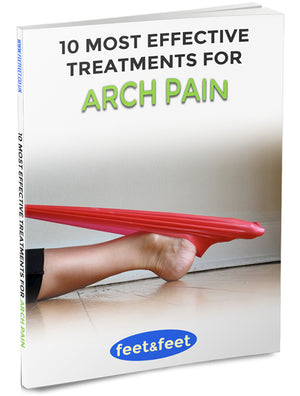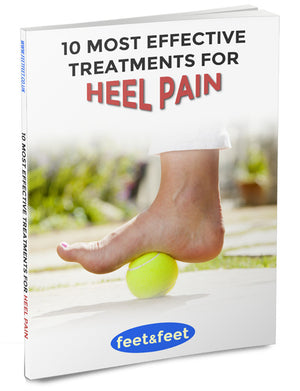The Best Metatarsalgia Treatments

It’s not surprising that the metatarsalgia region of the foot is vulnerable to pain – it’s an area that constantly has to support your body weight whenever you’re walking, running and jumping.
When shocks and impact isn’t properly distributed and ends up focused around the ball of the foot, pain and inflammation comes as a result – usually focused around the metatarsal heads. You may likely begin to see calluses form around the affected area too.
If you’re experiencing pain at the ball of the foot, you should immediately start taking care of it. Leaving the damage to sustain will only mean that you may end up needing more expensive types of treatments – surgery, injections or medication.
Here are 3 of the best metatarsalgia treatments that are quick, easy and can be relatively inexpensive to implement.
Wear the Right Footwear
Poorly fitted footwear that doesn’t have adequate support is a sure way to damage your feet. One of the easiest ways to treat metatarsalgia is to wear the right footwear.
Aim for footwear that has great arch support to relieve some of the pressure off the ball of the foot by transmitting it through the arch instead. Also, make sure that your footwear has adequate cushioning to absorb the shocks and pressure surrounding the metatarsal region.

You should also consider wearing rocker bottom shoes (also known as toe rockers) that will help decrease pressure from the ball of the foot. These type of shoes have thicker than usual soles and a rounded heel.
Through a rocking motion, they’re designed to relieve pressure from the toes by shifting weight to behind the ankles and as a result, more work is required by the wearer to find their centre of gravity and to stay balanced, as opposed to wearing regular shoes with flat soles.
Rest Your Feet
It almost sounds too simple, but habits and lifestyle can often overshadow what’s actually best for your feet, even if it is “common sense”.
Try to avoid being on your feet for long periods of time and find time to put your feet up and rest them. Granted, this may be difficult if you have a job that requires you to constantly be on your feet, which makes footwear even more important.
Replace any high impact activities that includes a lot of running and jumping with low impact activities such as swimming and cycling. You want to avoid shocks and sustained pressure on the balls of your feet as much as you can.
Wear Condition Specific Orthotics
Condition specific orthotics are custom made inserts – not too dissimilar to condition specific insoles – with the major difference being that orthotics have modifications built-in that helps to relieve pressure from the region of concern.

You would usually have to consult with an orthotists or podiatrist for an orthotic insert to be created to your specifications, therefore you can expect it to be a lot more costly than buying a ready made insole.
However, it’s probably the best case scenario if other methods haven’t worked for you that doesn’t involve more serious treatments (e.g. steroid injections and surgery).
Metatarsal Pads
Metatarsal pads placed inside the shoe can help cushion the ball of the foot and alleviate pressure and pain.
Alternatively, some insoles have adequate thickness and cushioning to protect the metatarsal region, as well as providing support for the rest of the foot.
Pain Relief Medication
Over-the-counter pain medications like ibuprofen or paracetamol can help manage pain and inflammation. They can take effect in less than 30 minutes and last for 4-6 hours and sometimes even longer.
However, medication only provides temporary relief and does not resolve the problem; you’d still have to treat the underlying cause of your foot pain.
Stretching and Strengthening Exercises
Perform exercises to strengthen the muscles of the foot and lower leg, and stretch the Achilles tendon and plantar fascia to improve foot mechanics.
Many related exercises are covered in our 10 Best Plantar Fasciitis Exercises article.
If you require guidance and motivation, then a physical therapist can help. They can give you a personalised plan that includes specific exercises and treatments to address the underlying causes of metatarsalgia.
Always remember to adjust your activities to avoid high-impact sports or prolonged standing until the pain subsides.
Weight Management
The more overweight you are, the more pressure and stress will be placed on your legs and feet. Overtime, the pressure and impact absorbed with each step can result in damage and injuries.
Maintaining a healthy weight through a healthy diet and exercise is the only way to combat this problem.
If there are no signs of improvements...
Then you should begin seeking medical alternatives from your local GP. It’s often the case that you can successfully treat metatarsalgia at home, but if the pain doesn’t subside or you see changes in the shape of your foot, then this is a cause for concern.
There may be underlying problems that can only be found through an x-ray or blood tests, which can be arranged through your GP.
Surgical options may also be recommended to realign the metatarsal bones or address any underlying structural issues.




Leave a comment